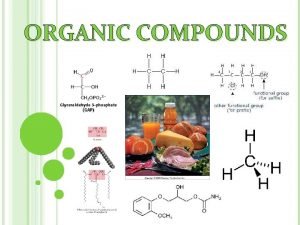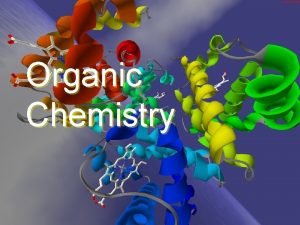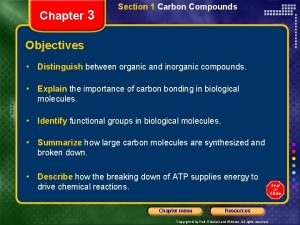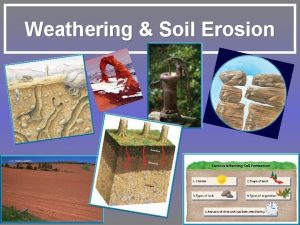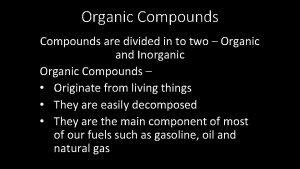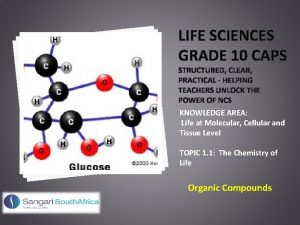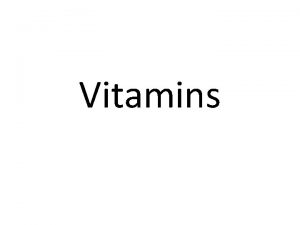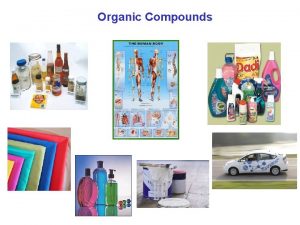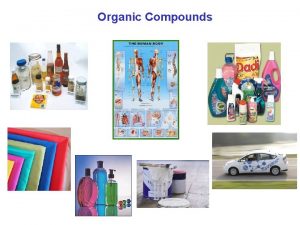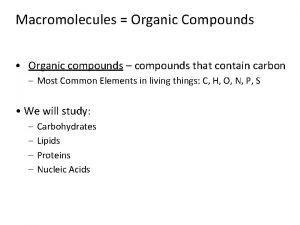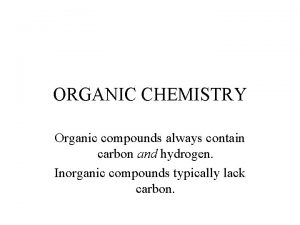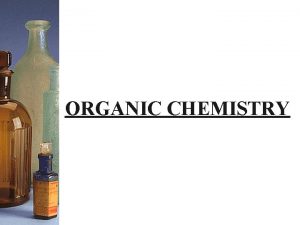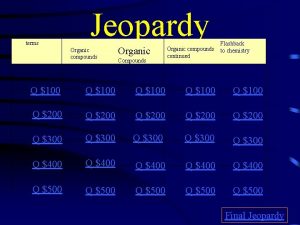5 3 Organic Compounds organic compounds always contain











- Slides: 11

5. 3 - Organic Compounds • organic compounds always contain carbon, and usually contain hydrogen (may also include other metals / non-metals) • some organic compounds are naturally occurring, others can be made in labs (ie. used in materials for building / clothing) • C is written before H in the formulae of organic molecules, to differentiate them from acids (which almost always start with H). Most organic compounds are not acids. Ex. HCl is an acid H on left vs. CH 4 is a hydrocarbon H on right

Carbon in Organic Compounds • C has four valence electrons, which allows for more chemical bonding possibilities than any other element w in almost all organic compounds, C is bonded to: § H atoms § other C atoms § other elements close to C on the PT (ie. O, N, S, P, halogens)

Carbon in Organic Compounds • because C can form 4 bonds, it can form w ring, w cage, and w branched-chain structures • long carbon chains form petroleum and plastics FYI… the formula CH 3(CH 2)n. CH 3 represents polyethylene (used for sandwich wrap), when n ≈ 5000 !

Inorganic Compounds …are compounds that do not contain carbon, as well as some exceptions to the organic classification. Examples of some exceptions containing C: § oxides: CO 2, CO § carbonates: Ca. CO 3 inorganic compounds § carbides: Si. C

Organic & Inorganic Compounds

Hydrocarbons • A hydrocarbon is an organic compound that contains only carbon and hydrogen. w hydrocarbons are based on a carbon “backbone” / chain, with H atoms added on the sides w The simplest hydrocarbon is methane, followed by… § ethane § propane § butane § pentane w all hydrocarbons are flammable, and most are liquids are room temperature

Various Models of a Simple Hydrocarbon - Methane

Hydrocarbons

Alkanes What is the formula (in terms of the # of carbon atoms and the # of hydrogen atoms) for this family of hydrocarbons? Cn. H 2 n+2 the alkane family • dropping one of the H atoms from the formula of an alkane gives a molecular fragment: an alkyl group Ex. Parent Alkane Formula of Alkyl Group methane CH 4 CH 3– propane CH 3 CH 2 CH 3 CH 2–

Alcohols • alcohols are organic compounds containing C, H and O • H and O are “packaged” as a hydroxyl (–OH) group (Note: this is not the same as a hydroxide ion) • alcohols are organic compounds with at least one –OH group attached to an alkyl group w the simplest alcohols are methanol (CH 4 O), ethanol (C 2 H 6 O) and isopropyl alcohol (C 3 H 8 O) w alcohols are very good solvents, and are generally very flammable

Alcohols CH 3 CH(OH)CH 3 2 -propanol http: //www. bcscience. com/bc 10/pgs/quiz_section 5. 3. htm
 All organic compounds must contain the element
All organic compounds must contain the element Organic compounds must contain
Organic compounds must contain All organic compounds contain carbon and ________.
All organic compounds contain carbon and ________. Weathering and soil erosion
Weathering and soil erosion A carbohydrate is an organic compound because it contain
A carbohydrate is an organic compound because it contain Low prices always
Low prices always What is the classification of organic compounds
What is the classification of organic compounds Charring test of organic and inorganic compounds
Charring test of organic and inorganic compounds Organic compounds
Organic compounds Intro to organic chemistry
Intro to organic chemistry Organic compounds grade 10 life science
Organic compounds grade 10 life science Vitamin classification chart
Vitamin classification chart
